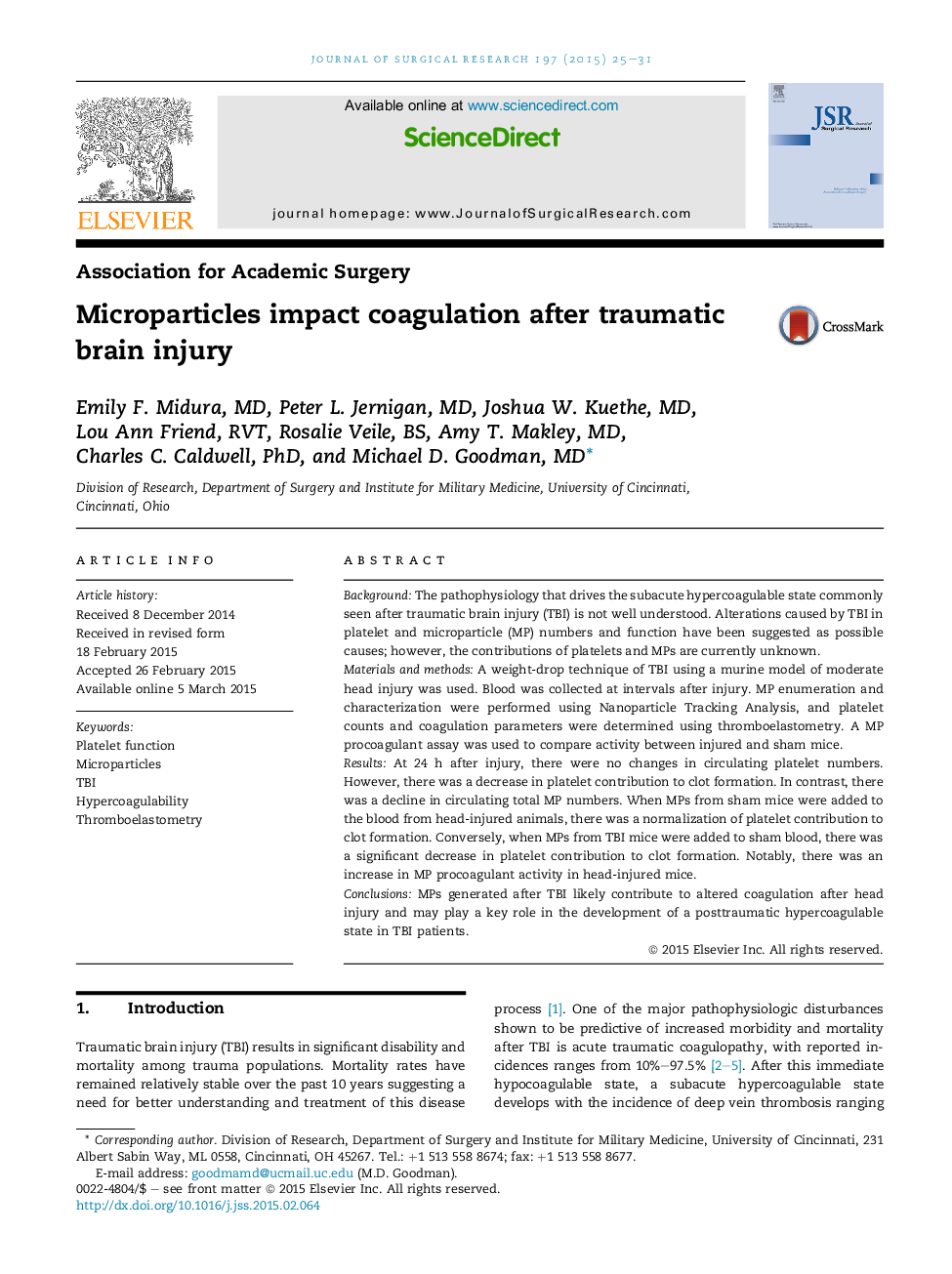| Article ID | Journal | Published Year | Pages | File Type |
|---|---|---|---|---|
| 4299788 | Journal of Surgical Research | 2015 | 7 Pages |
BackgroundThe pathophysiology that drives the subacute hypercoagulable state commonly seen after traumatic brain injury (TBI) is not well understood. Alterations caused by TBI in platelet and microparticle (MP) numbers and function have been suggested as possible causes; however, the contributions of platelets and MPs are currently unknown.Materials and methodsA weight-drop technique of TBI using a murine model of moderate head injury was used. Blood was collected at intervals after injury. MP enumeration and characterization were performed using Nanoparticle Tracking Analysis, and platelet counts and coagulation parameters were determined using thromboelastometry. A MP procoagulant assay was used to compare activity between injured and sham mice.ResultsAt 24 h after injury, there were no changes in circulating platelet numbers. However, there was a decrease in platelet contribution to clot formation. In contrast, there was a decline in circulating total MP numbers. When MPs from sham mice were added to the blood from head-injured animals, there was a normalization of platelet contribution to clot formation. Conversely, when MPs from TBI mice were added to sham blood, there was a significant decrease in platelet contribution to clot formation. Notably, there was an increase in MP procoagulant activity in head-injured mice.ConclusionsMPs generated after TBI likely contribute to altered coagulation after head injury and may play a key role in the development of a posttraumatic hypercoagulable state in TBI patients.
